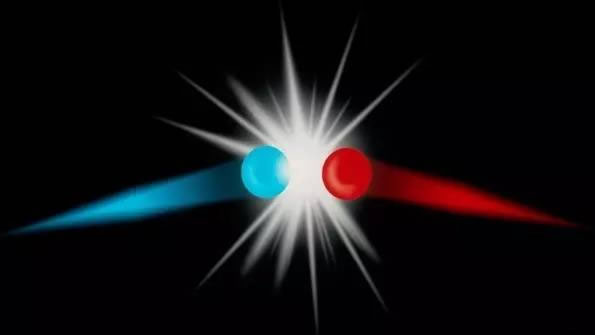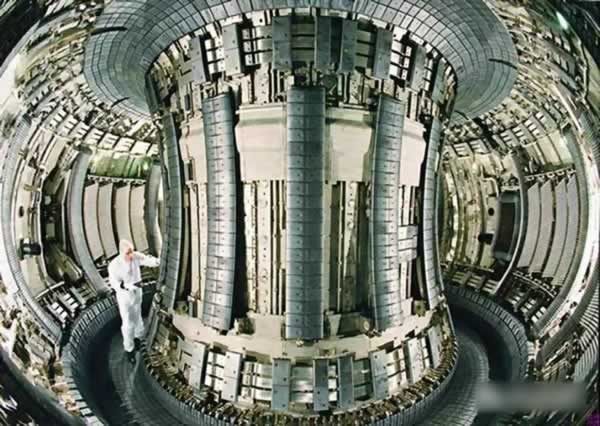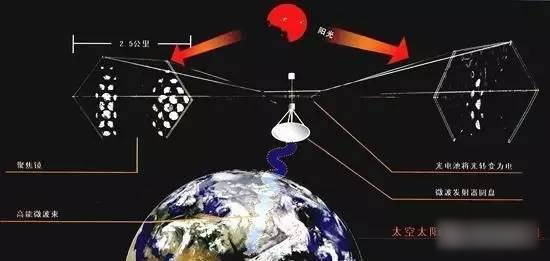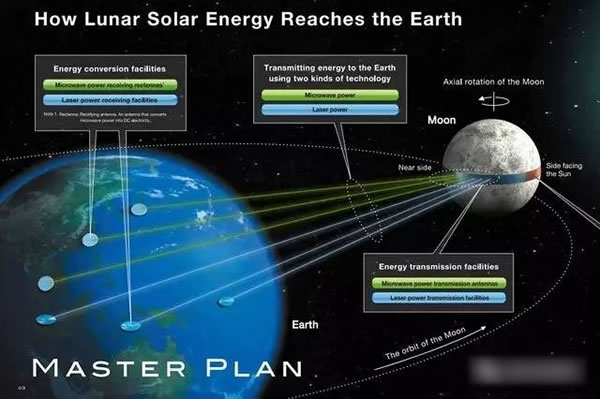Nowadays, human beings have mastered power generation technologies such as water, fire, wind, light, and nuclear, and are even exploring controllable nuclear fusion technology. The purpose is to completely solve the energy problem. Therefore, in the past hundred years, smart humans have invented a variety of power generation technologies. Today, Xiao Bian has counted 10 of the most peculiar and most promising power generation methods. He took everyone to see what bold human attempts and crazy ideas people have done for power generation. 1. Anti-matter electricity generation Antimatter is a very special substance. It consists of antiparticles, just as ordinary matter consists of particles. For example, positrons are antimatter of electrons; antiprotons are antihydrogen atoms. Antimatter is also made up of ordinary substances, so they are of the same quality. The only difference is that the particles they contain contain the opposite direction of rotation and charge. We know that when particles that are antiparticles meet each other, they will annihilate and release a lot of energy. The energy released can be calculated using Einstein's energy equation E=C^2. This method is still in the experimental stage. The National Aeronautics and Space Administration (NASA) has invested a lot of manpower and resources in this field. 2, magnetic fluid power generation The flowing conductive fluid interacts with the magnetic field to generate electrical energy. Magnetic fluid power generation technology uses fuel (oil, natural gas, coal, nuclear energy, etc.) to directly heat an easily ionized gas, which is ionized into a conductive ion current at a high temperature of 2000°C, and then allowed to flow at a high speed in a magnetic field. , cutting magnetic lines, generate induced electromotive force, that is directly converted from thermal energy into electric current, because without mechanical conversion, so called "direct power generation", its fuel utilization has been significantly improved, this technology is also known as "plasma power generation technology". Both Japan and the former Soviet Union have included magnetic fluid power generation as a national key energy research project and have achieved remarkable results. The former Soviet Union has used magnetic fluid power for earthquake prediction and geological exploration. In 1971, the former Soviet Union built a magnetic fluid-steam combined cycle power plant with an installed capacity of 75,000 kilowatts, of which the magnetic fluid motor capacity is 25,000 kilowatts. In 1986, the former Soviet Union began construction of the world’s first 500,000-kilowatt magnetic fluid and steam combined power station. The fuel used in this power plant is natural gas. It can supply electricity and heat, compared with ordinary thermal power stations. It saves 20% of fuel. 3, space solar power station The establishment of a solar power station in the space can rationally make full use of space resources. The solar power station is preferably set in the geosynchronous orbit in the equatorial plane, at 123 degrees west longitude and 57 degrees east longitude, so that the solar array is always oriented to the sun, and the microbeams of the transmitting antenna must point to the ground receiving antenna. Because of the synchronous orbit in the equatorial plane, the relative position of the space solar power plant and the ground remains unchanged. A small amount of propellant is needed on the power station to overcome the orbital drift caused by factors such as solar and lunar gravity, solar light pressure, and earth eccentricity. However, when the space solar power station moves around the earth, it is blocked by the earth for part of the time. However, because the station is set on a geostationary orbit, 277 days are full sunshine every year. Only the annual vernal equinox and the autumnal equinox have 45 days before and after the eclipse. Earth shadow (also known as the star-eating period) appears on the orbital power generation facilities. The power outage time is only 75 minutes, and the power outage time can be predicted correctly. According to this calculation, the space solar power station has an average of 99% of the time every day, and it can transmit power to the ground receiving equipment. In outer space, the use of solar energy will not be affected by the weather, dust, and harmful gases. In addition, the solar radiation power station will receive 6 to 15 times more solar energy than a solar power station of the same scale. Times. 4, dual geothermal power generation This kind of power generation method does not directly use the steam generated by the underground hot water to enter the steam turbine to do work, but uses the underground hot water through the heat exchanger to heat a certain low-boiling working medium to make it into steam, which is then used to promote the steam. Gas turbines, and driving generators to generate electricity. Therefore, in this type of power generation system, two fluids are used: one is to use geothermal fluid as a heat source; the other is to use low-boiling fluid fluid as a working medium to complete the transformation of thermal energy of underground hot water into mechanical energy. The so-called dual-flow system geothermal power generation is named after this. Heat discharge after power generation in a single-stage double-flow power generation system has a high temperature of up to 50-60°C. A two-stage dual-flow geothermal power generation system is a system that uses heat from the drainage to generate electricity again. With the two-stage utilization scheme, the evaporation pressure in the evaporators at all levels should be considered comprehensively, and the best value should be selected. If these values ​​are chosen to be reasonable, then in the case of a certain amount of underground hot water and temperature, it can generally increase the power generation by about 20%. The advantage of this system is that it can make fuller use of the heat of underground hot water and reduce the electricity consumption rate of hot water; the disadvantage is that it increases the complexity of equipment investment and operation. 5, storage air power generation Air power generation technology first came from Germany. In the 1970s, German engineering and technical personnel found a good way to store air, that is, build a large gas storage station underground, compress air with an air compressor, store it, and open the valve when needed, driven by high-pressure air. Turbine power generation. If the gas can be heated before the air is discharged, the efficiency will be higher. The first air power station in the world was built in Lower Saxony, Germany. Two gas storage stations used two flying salt mines, 658 meters and 800 meters underground respectively, with a gas output of 310,000 cubic meters. For 70pa, enough power for 290 MW generators for 3 hours. The “Samsung†power station built by the United States in Alabama is using abandoned alkali mines. It is also 800 meters deep underground and has a gas storage capacity of 9 million cubic meters. After the grid-connected power generation is completed, it can generate 2,700 megawatts, which is equivalent to the peak power generation of two large-scale nuclear power plants, and can satisfy 680,000 households using electricity for two days. 6, cold power generation A power plant that uses the cryogenic nature of LNG to generate electricity has been built by Japan’s Dynamic Electrodynamics Corporation on Dongfan Island. Unlike the thermal power generation that burns liquefied gas, “cold-heat power generation†is the liquefaction of natural gas at -162 degrees Celsius, which increases the volume by 600 times and uses the force generated by this expansion to drive the turbine. Since natural gas is not burned, this is an energy-saving power generation method. 7. Lunar Energy Power Generation There is almost no atmosphere on the surface of the moon, and the annual solar radiation energy reaching the moon is about 12 trillion kilowatts, which is equivalent to 2.5 times the sum of all kinds of energy consumed on the earth every year! Moreover, because the moon rotation cycle and its orbit around the earth are almost time Equally, the days of black and white each take 14.5 days, one day is equivalent to the length of the earth in a month, and this can allow it to obtain more solar energy. The establishment of a global parallel solar power station on the surface of the moon can maximize the efficiency of solar panels, so that extremely rich and stable solar energy can be obtained. The Japanese construction company Shimizu Corporation put forward an ambitious so-called “Monthly Ring Projectâ€: build a solar power belt around the 11,000 km long equator on the moon, convert the electric energy into microbeams and laser beams, and then transmit it back to Earth. The receiving station. During this period, the radio navigation station will ensure that the microbeams and laser beams are accurately delivered to ground receiving stations. The "Monthly Ring Project" has a power generation scale equivalent to 1.7 billion tons of oil or 13,000 nuclear power plants per year. According to the current energy consumption rate, it can be used for 30 years. 8. Road power generation A subsidiary of the Israel Institute of Technology invented a highway that would generate electricity. It implanted a large number of piezoelectric crystals in the asphalt of ordinary roads. It generates electricity through the piezoelectric transformation of a passing vehicle. A road of 1 km can produce about 100-400. Kilowatts of electricity. Scientists said that, theoretically, these pitch-mounted piezoelectric crystals can be used for at least 30 years. Therefore, the technology can be applied to any large flow of roads, including railways and highways. At present, the cost of its pavement reconstruction is about 650,000 U.S. dollars per kilometer, but after large-scale production starts, the cost can be reduced by 2/3. The long-term goal of the power generation method is that the price of electricity generated by the system can be reduced to 3 to 10 cents per degree (approximately RMB 0.2 to 0.7 yuan) - very close to the current civilian electricity price, and even lower, And the resulting carbon reduction effect is inestimable, especially for countries that rely heavily on coal-fired power in our country. It is of great significance: By the end of 2008, there were 41,000 km of highways in China, if all With this type of technology applied, they will generate up to 143.6 billion kWh of electricity a year. 9, hot ground power generation Cement roads can absorb a lot of heat. A Dutch company called the company came up with a trick to produce energy by absorbing heat from the hot ground. This energy can be used to heat the water that is buried in the pipes under the road. Then, the heat of the water is used to generate electricity. Of course, it can also be sent directly to the indoor use. This system can also prevent road ice formation while it can supply hot water to nearby houses. This will reduce capital investment and road maintenance costs, while also generating electricity. 10, seawater temperature difference power generation The world's oceans are vast and the tropical ocean is quite wide. After the ocean heat energy is used up, it can be supplemented and it is worthy of development and utilization. Seawater temperature difference power generation technology uses high-temperature heat sources for sea surface heated by solar energy (25°C~28°C), and uses seawater (4°C~7°C) at a depth of 500 meters to 1 000 meters as a low-temperature heat source. Constitute a thermodynamic cycle system to generate electricity. From the high temperature heat source to the low temperature heat source, it is possible to obtain effective energy with a total temperature difference of about 15°C to 20°C. Eventually it is possible to obtain an energy of 11°C temperature difference with engineering significance. In 1961, France built two 3,500 kW seawater thermoelectric power stations on the coast of West Africa. The United States and Sweden jointly built a seawater thermoelectric power station with a capacity of 1,000 kW on the Hawaiian Islands in 1979. The United States also plans to build a 1 million kilowatts seawater thermoelectric generator at the beginning of the 21st century and use the thermal energy of the Gulf Stream in the east. 500 ocean thermal power stations have been established along the coast, with a generating capacity of 200 million kilowatts. MONBAND is the first company to register and produce Water Soluble Fertilizer in China.
Monoammonium Phosphate, MAP Fertilizer
Monoammonium
Phosphate 12 61 0
Monoammonium Phosphate,MAP Fertilizer,Phosphate Fertilizer,Straight Fertilizer,water soluble MAP Hebei Monband Water Soluble Fertilizer Co., Ltd. , https://www.wsfertilizer.com









High Performance-Price Ratio Straight Fertilizer.
In order to power humanity invented these strange power generation methods!
